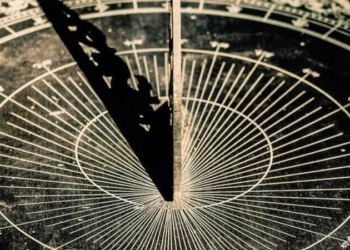The over 1,800-year-old temple that surprises many as it always rains on June 19 every year. What is the reason behind this?
On the Tungshan mountain range, located in Henan Province (China), there is an ancient temple over a thousand years old, famous like the Shaolin Temple. This temple is called Fengxue Temple.
The temple dates back more than 1,800 years and is always regarded by the local people as a divine temple (or sacred temple), because this temple experiences a phenomenon that can be described as “calling for rain and wind”.
According to local residents, every year on the afternoon of June 19, a heavy rain always pours down, cleansing the temple. Notably, before the rain starts, Fengxue Cave in the mountain behind the temple always emits a sound resembling a roar.
So, what is the cause of this strange phenomenon?

Fengxue Temple is located on the Tungshan mountain range.
According to experts, the geographical observation surrounding Fengxue Temple reveals that it is in a mountainous area rich in Maifan stone, a type of stone known for its excellent water retention properties. Maifan stone is a natural mineral stone that contains many minerals and nearly 50 essential trace elements for the body. Due to its medicinal properties, Maifan stone is used to treat various skin, neurological, and digestive ailments.
Furthermore, the surrounding vegetation is dense, and the air has a high humidity level. These are ideal conditions for cloud formation.
On June 19 each year, this area receives rain. Experts suggest that the cause of this strange phenomenon may be related to human activities. Specifically, on this day, Fengxue Temple often hosts a large festival. Tens of thousands of tourists come here to pray. In areas where large crowds gather, more heat is released. This increases the evaporation rate of the warm, humid air.
Subsequently, the warm, humid air converges with the cold air above, forming water vapor that condenses into raindrops.
Moreover, the distinctive terrain of Fengxue Temple makes it resemble a large sound amplifier, capturing all noises created by humans. Therefore, when sound waves are amplified, they disrupt the equilibrium of the air, causing rain to fall.

Fengxue Temple has a unique geographical location and was first built over 1,800 years ago.
The reason why Fengxue Cave emits loud sounds before rain is related to air pressure. Experts point out that pressure differences cause air to enter the cave, forming convection currents. Due to the rugged internal structure of the cave, with high, low, wide, and narrow sections, when the airflow moves from a wider area to a narrower one, it creates a Venturi effect that produces a loud sound.
Thus, this strange phenomenon has existed for many years at Fengxue Temple, formed by both natural and human factors.
The over 1,800-year-old temple with unique architecture

Fengxue Temple features diverse and unique architecture across different dynasties.
Fengxue Temple was first built in the first year of the Shobing period (year 190) during the Han Dynasty under Emperor Xian. Later, this temple was renovated and expanded during the Northern Wei, Tang, Song, Jin, Yuan, Ming, and Qing Dynasties. It is considered one of the oldest temples in China. Fengxue Temple was once famous alongside the Shaolin Temple (known as the cradle of Chinese martial arts with the saying “All martial arts come from Shaolin“), Baima Temple, and Xiangguo Temple.
The temple consists of over 140 rooms, with buildings constructed harmoniously according to the mountainous terrain, arranged and designed in a logical, diverse, and harmonious manner.
The layout of Fengxue Temple is quite unique. The main buildings in the temple, such as the Grand Hall of Great Hero, the Sutra Depository, and the Mysterious Bell Tower, are also not arranged along a central axis. This is likely limited by the terrain. The diverse architecture of Fengxue Temple impresses visitors as the temple has been renovated and expanded multiple times through various dynasties.
Due to its distance from the city, Fengxue Temple has preserved many architectural relics from various dynasties. This temple provides valuable materials on architectural history, praised by experts as a “museum of ancient Chinese architecture“. Inside the temple, there are over 30 stone Buddha statues and 7 wooden Buddha statues from the reign of Emperor Jiajing (the 12th emperor of the Ming Dynasty). Additionally, the temple houses many stone tablets recording events in various calligraphy styles.





















































